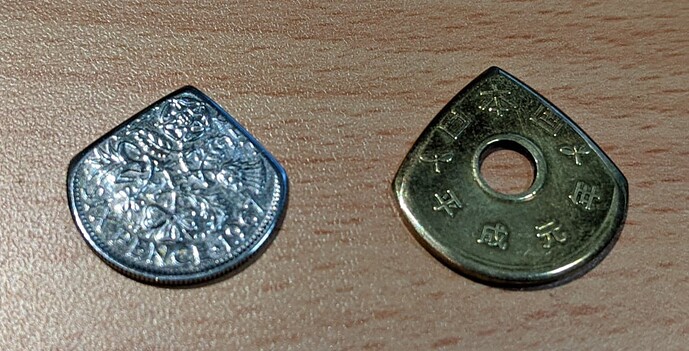MixBus 32C
Mixbus is a commercial DAW from renowned mixing console maker Harrison Consoles. Harrison Consoles have been used by many iconic artists and their records over the last few decades including Queen and Michael Jackson.
Mixing view
Track edit view
Mixbus is a commercial DAW from renowned mixing console maker Harrison Consoles. Harrison Consoles have been used by many iconic artists and their records over the last few decades including Queen and Michael Jackson.
Mixbus is heavily based on the Ardour platform and Harrison are actually a major sponsor of Ardour, as well as a contributor of code and plugins to the Ardour project. Probably more than 90% of the functionality between Ardour and Mixbus is the same, as you might notice from comparing the screen shots of the two.
But there are some key differences, and it’s these that have always made me interested in Mixbus, enough that when I was presented with an offer to get Mixbus 32C for $99, I jumped at it.
Note that Mixbus is in two versions: Standard Mixbus is normally $89 and is great for most users. Mixbus 32C is the professional version which pretty much fully emulates the renowned Harrison analogue hardware console and is normally $349, so getting 32C for $99 was a bargain.
So what’s the differences?
Well, Mixbus is not only different from Ardour, but from pretty much any other mainstream DAW in one important aspect: how it sounds!
In a previous post I stated that most DAWs pretty much do the same thing, and that is true. Most DAWs are totally “transparent” and have no sound of their own. They do not colour or impact the nature or quality of the audio being mixed in any way on their own. That is, generally, by design and is a reason why digital audio recording and mixing is better than analogue audio recording and mixing. However, it’s also a reason why it’s worse…
Analogue recording and mixing systems degraded the audio and coloured the sound. A lot of this was highly undesirable. For instance: every time you “bounced” tracks from one tape to another the audio quality was impaired; every time you pass the audio signal through electronics, including the console itself, it was distorted by the circuits and the noise level increased; every time you mix or combine multiple tracks together, a “summing” function is used which adds further distortion and noise.
Digital doesn’t have these problems: you can mix and bounce tracks an unlimited number of times, route it any way you want, and perform unlimited mixes with no loss of quality. However…
In past, analogue console makers, like Harrison, took advantage of the distortions caused by the analogue electronic circuits and tuned them to make them enhance, rather than degrade, the audio as much as possible. They weren’t able to eliminate the distortion, but they could make it “musical”. The result of this is that analogue consoles “have a sound” and a Neve will impart a different sound from a Harrison, or an SSL console. Even different models of console from the same vendor would sound different from each other. Experienced producers and mixing engineers would often choose a studio to use based on the sort of sound they were after and the console that was available in that studio.
Digital mixing via DAWs doesn’t have this. DAWs do not touch the sound in any way: once the signal is in digital format it, effectively remains “intact” throughout the DAW unless the user deliberately colours it with things like EQ and compression plugins. Without this, digitally mixed music can sound harsh and sterile, and lacking the warmth and “musicality” that was often imparted by analogue consoles.
You don’t have to take my word for it. Here is Grammy-winning mixing engineer Andrew Scheps on the subject ( the relevant part is at 3 mins and 21, but the whole video is worth watching):
Now, of course, we have loads of plugins available to us, many of which emulate old analogue EQs, compressors, etc. very well so we can, if we know what we are doing, get some of that character and musicality back into our mixes.
But one of the big things that most DAWs don’t do well and which is difficult to emulate with plugins is the summing function. Digital summing is absolutely precise and numerically correct, but it’s not very “musical”. What many professional producers do, to solve this, is to perform the final mix summing function in an external (aka “outbourd”) analogue summing device. They do this e converting the individual channels or busses back to separate analogue channels and pushing them into an external analogue mixer. Some of these can be very expensive.
Why Mixbus is different is that it includes an emulation of the renowned Harrison analogue console circuit on a number of its mixing busses. That means you should get all of the benefits of using an outboard analogue summing mixer without the hassle or expense.
This also points to one of the key differences between Ardour ad Mixbus: Ardour has busses and you can create any number of them as required (and you can do the same in Mixbus) but these will do digital summing. Mixbus has a set of specific analogue summing busses that create that musical, analogue sound. Mixbus 32C additionally (over Standard Mixbus) has a full emulation of the Harrison analogue console EQ circuitry, as well as additional analogue summing busses.
Mixbus also has built-in tape saturation emulation (in the screen shot, it’s the analogue-style meters in each of the mix bus strips).
So my reason for getting Mixbus over and above Ardour was to experiment with this and, hopefully, to improve some of my mixes (when I get time).
Cheers,
Keith





























